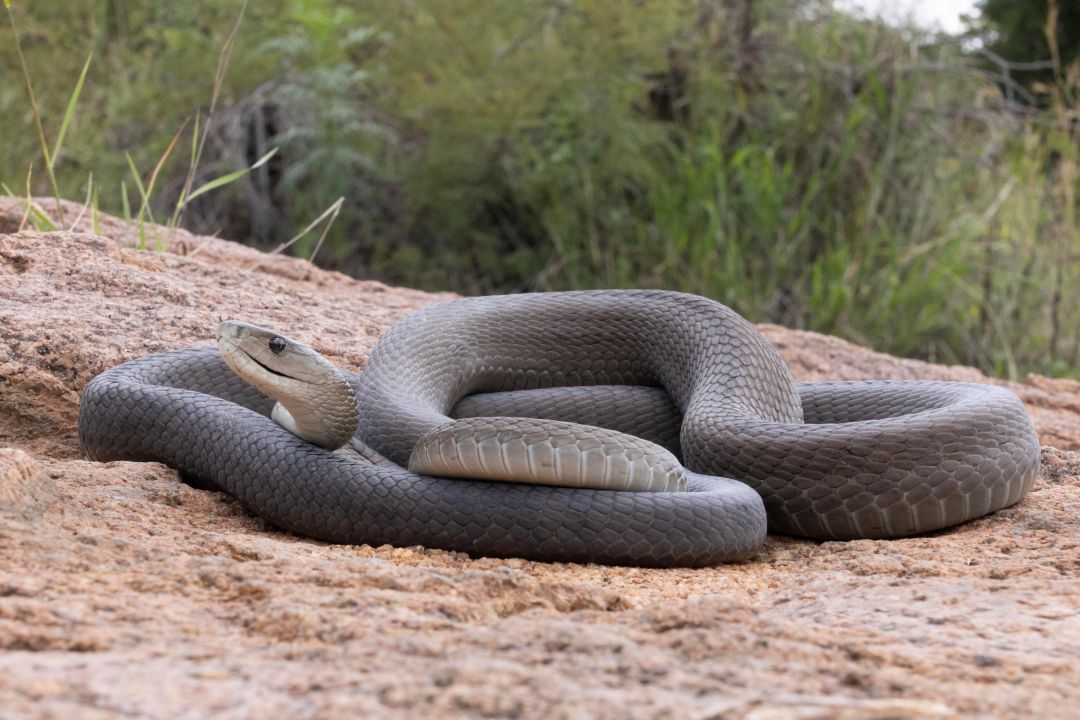Media release
From:
A breakthrough study at the University of Queensland has discovered a hidden dangerous feature in the Black Mamba one of the most venomous snakes in the world.
Professor Bryan Fry from UQ’s School of the Environment said the study revealed the venoms of three species of mamba were far more neurologically complex than previously thought, explaining why antivenoms were sometimes ineffective.
“The Black Mamba, Western Green Mamba and Jamesons Mamba snakes aren’t just using one form of chemical weapon, they’re launching a coordinated attack at 2 different points in the nervous system,” Professor Fry said.
“If you’re bitten by 3 out of 4 mamba species, you will experience flaccid or limp paralysis caused by postsynaptic neurotoxicity.
“Current antivenoms can treat the flaccid paralysis but this study found the venoms of these three species are then able to attack another part of the nervous system causing spastic paralysis by presynaptic toxicity,
“We previously thought the fourth species of mamba, the Eastern Green Mamba, was the only one capable of causing spastic paralysis.
“This finding resolves a long-standing clinical mystery of why some patients bitten by mambas seem to initially improve with antivenom and regain muscle tone and movement only to start having painful, uncontrolled spasms.
“The venom first blocks nerve signals from reaching the muscles but after the antivenom is administered, it then overstimulates the muscles.
“It’s like treating one disease and suddenly revealing another.”
Mamba (Dendroaspis species) snake bites are a significant threat in sub-Saharan Africa accounting for 30,000 deaths annually.
PhD candidate Lee Jones who conducted the experimental work on the mamba venoms said the research proved new antivenoms were critical to saving lives.
“We set out to understand different venom potencies between mamba species,” Mr Jones said.
“We expected to see clear flaccid paralysis inducing post synaptic effects, and effective neutralisation by antivenom.
“What we were not expecting to find was the antivenom unmasking the other half of the venom effects on presynaptic receptors.
“We also found the venom function of the mambas was different depending on their geographic location, particularly within populations of the Black Mamba from Kenya and South Africa.
“This further complicates treatment strategies across regions because the antivenoms are not developed to counteract the intricacies of the different venoms.”
Professor Fry said specialised antivenoms could be developed following this study to increase efficacy rates.
“This isn’t just an academic curiosity, it’s a direct call to clinicians and antivenom manufacturers,” Professor Fry said.
“By identifying the limitations of current antivenoms and understanding the full range of venom activity, we can directly inform evidence-based snakebite care.
“This kind of translational venom research can help doctors make better decisions in real time and ultimately saves lives.”
The lab work was completed in collaboration with Monash Venom Group.
This research was published in Toxins.



 Australia; VIC; QLD
Australia; VIC; QLD


